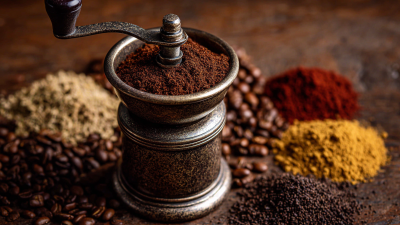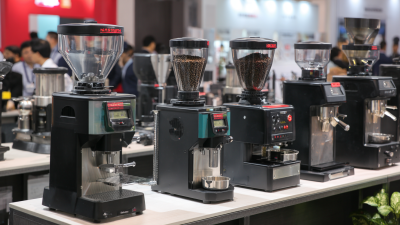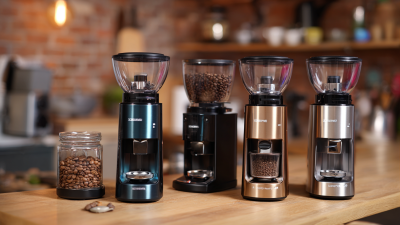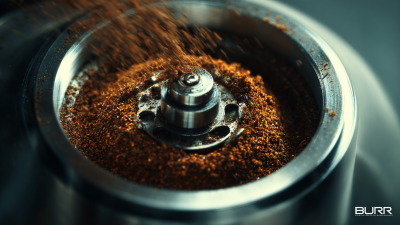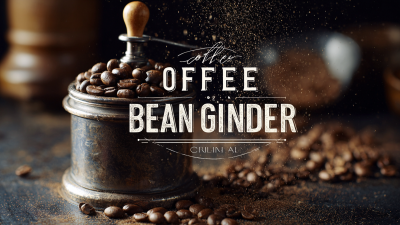Leave Your Message
-
Phone
-
E-mail
-
Whatsapp
-
Whatsapp


The small burr grinder has emerged as an essential tool for coffee enthusiasts, embodying precision and versatility in the grinding process. According to the Specialty Coffee Association, nearly 70% of coffee connoisseurs believe that grind size significantly affects the extraction and overall flavor profile of their brew. In a market projected to reach $4.5 billion by 2025, the demand for high-quality, compact grinders is surging as consumers seek to elevate their home brewing experience. This guide will help you navigate the multitude of options available, highlighting key features and considerations to ensure that you choose the perfect small burr grinder tailored to your coffee needs, ultimately enhancing your brews and satisfaction with each cup.
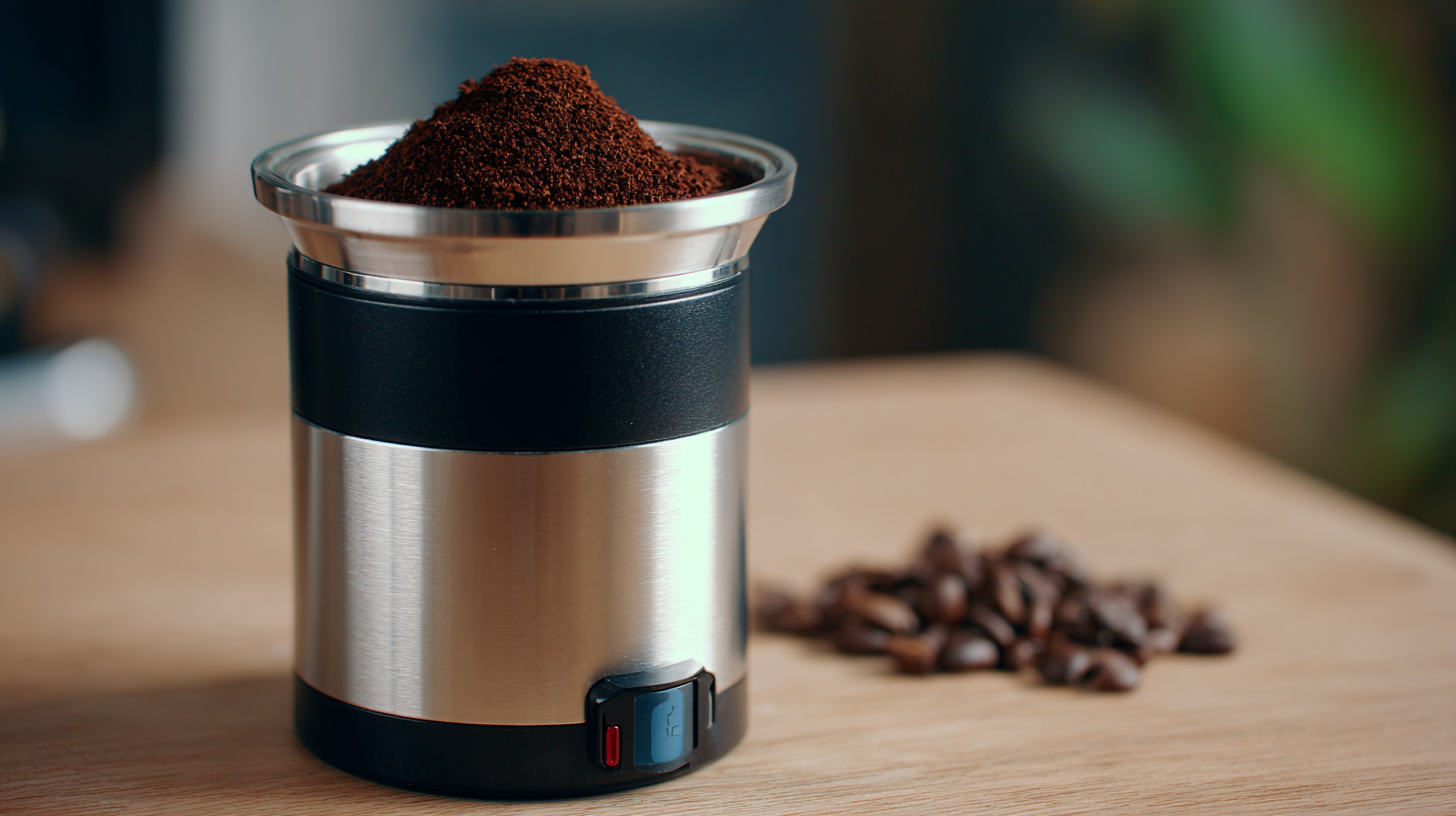
When it comes to selecting the perfect small burr grinder, it's essential to understand the various types available to cater to different preferences among coffee lovers. Burr grinders typically come in two main styles: conical burr and flat burr. Conical burr grinders are favored for their ability to produce consistent grind sizes and their reduced heat generation, which helps preserve the coffee's natural flavors and aromas. On the other hand, flat burr grinders offer precise control over grind size and are often preferred by professionals in coffee shops for espresso preparation. According to a report, grinders can significantly impact the flavor profile of coffee; freshly ground beans retain up to 80% more aroma compared to pre-ground options.
For coffee aficionados, the choice of grinder directly influences the quality of the brew. A study found that coffee tastes best when the beans are ground immediately before brewing, making it crucial to invest in a reliable grinder. The global coffee grinder market is expected to reach a valuation of over $2 billion by 2025, driven by the increasing demand for premium coffee. With so many options on the market, selecting a grinder that fits your brewing style and flavor preferences can enhance your daily caffeine ritual. Whether you prefer a rich, bold flavor or something light and smooth, understanding these different burr grinder types will help you achieve the perfect cup every time.
| Grinder Type | Material | Grind Settings | Capacity | Price Range |
|---|---|---|---|---|
| Conical Burr Grinder | Stainless Steel | 15 Settings | 20-30g | $50 - $200 |
| Flat Burr Grinder | Ceramic | 10 Settings | 20-40g | $60 - $300 |
| Manual Burr Grinder | Wood & Steel | Adjustable | 15-20g | $30 - $100 |
| Electric Burr Grinder | Plastic & Steel | 20 Settings | 30-80g | $40 - $150 |
When selecting a small burr grinder for your coffee needs, there are several key features to consider that can significantly enhance your brewing experience. Firstly, grind size consistency is paramount; achieving uniform particle size ensures optimal extraction, which is crucial for flavor. According to a recent report by the Specialty Coffee Association, the ideal grind size can vary between 200 to 800 microns depending on the brewing method, reinforcing the necessity of precision in grind settings.

Another essential aspect is the build quality of the grinder. Professional reviews highlight that grinders made from durable materials not only ensure longevity but also contribute to better grind performance. For instance, grinders with stainless steel or ceramic burrs tend to maintain their sharpness for longer, resulting in less heat transfer and preserving the coffee's delicate aromas. The potential for heat buildup is a significant factor, as studies have shown that excess heat can compromise the coffee's flavor profile, making it crucial to select a grinder designed to minimize this issue.
Lastly, consider the ease of use and maintenance. A grinder that is easy to clean can save both time and effort, ensuring that your coffee remains fresh and flavorful. Some models come with removable burrs or a cleaning brush, features highlighted in consumer reports as beneficial for maintaining grinder hygiene. Prioritizing these elements will lead you to a small burr grinder that not only meets your brewing needs but also enhances the overall enjoyment of your coffee experience.
When selecting the perfect small burr grinder for your coffee needs, it’s essential to consider top brands recognized in the industry for quality and performance. Based on recent market research, the global coffee grinder market is projected to grow at a CAGR of 5.7% from 2020 to 2027, underscoring the importance of investing in a reliable grinder. Among the leading brands, Baratza stands out for its precision and consistency, making it a favorite among coffee enthusiasts. Their Encore model, for instance, offers a range of grind settings, allowing users to achieve the perfect uniformity crucial for brewing.
Another brand worth considering is Breville, which combines innovative technology with user-friendly features. Their Smart Grinder Pro provides an intuitive interface and is equipped with Dosing IQ technology, ensuring accurate grind size adjustment. According to a 2021 consumer survey, nearly 70% of coffee lovers reported that grind consistency significantly impacted their brewing results, reaffirming the need to choose a high-quality grinder. Additionally, Capresso is another key player, known for its compact design and affordability, making it a great option for those with limited counter space. These brands represent just a fraction of the market, yet they consistently receive high marks for their performance and durability, aligning with the growing demand for premium coffee equipment.
Maintaining your burr grinder is crucial for achieving optimal coffee flavor and consistency. Regular cleaning and calibration can greatly enhance the performance of the grinder, ensuring that each brew extracts the desired flavors and aromas. According to market insights, the demand for high-quality grinding equipment in various sectors, including coffee, has surged significantly. The burr grinder market alone reflects a growing appreciation for precision in coffee brewing, with projections indicating a rising trend in consumer interest and investment in premium grinders.
Just as the railway grinding equipment market is expected to grow from $1.2 billion in 2024 to $1.8 billion by 2033, reflecting a compound annual growth rate of 5.5%, coffee enthusiasts are also prioritizing quality and maintenance to maximize their brewing experience. Key maintenance tips for burr grinders include regularly checking and replacing worn grinding burrs, keeping the grinder free from coffee oils and residues, and adjusting settings for the specific brew method being used. Taking these steps not only prolongs the lifespan of the grinder but also significantly enhances the overall coffee experience.

The grind setting of your coffee can significantly affect the flavor profile and overall brewing experience. When selecting a small burr grinder, it’s essential to consider the types of coffee you enjoy, as different brewing methods require varying grind sizes. For example, a coarse grind is ideal for methods like French press or cold brew, allowing water to interact with the coffee grounds for a longer period, which extracts rich flavors and aromatic oils. On the other hand, a finer grind is necessary for espresso, where water passes through quickly, requiring a more concentrated flavor to emerge.
Experimenting with grind settings can uncover nuances in your coffee that you might have overlooked. A medium grind, suited for drip brewing, strikes a balance between extraction speed and flavor intensity. Understanding the impact of grind size allows you to tailor your coffee experience, enhancing the sweetness, acidity, and body of your brew. As you explore your favorite coffee profiles, remember that the right grind setting acts as a key that unlocks the full potential of each bean, ultimately elevating your brewing routine.
